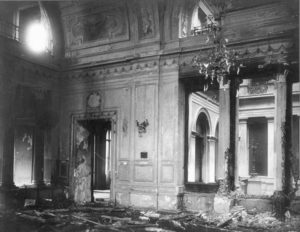The conviction of a team of radical would-be terrorists who discussed planting IEDs in the lavatories of the British Stock Exchange reminds me that lavatories are a theme in many IED attacks, which I think is curious. Here’s a range of previous “bombs in the bogs””
Only a couple of days ago some sort of apparent explosive device was found in the lavatory of a Libyan plane in Egypt For what its worth I don’t think it was an IED but the story is pretty cloudy for now.
In May 2008 there was the very peculiar incident in Exeter, UK, where a decidedly odd individual detonated a device while he was in the lavatories of a fast food restaurant.
In 1957 an elderly man blew himself up in the lavatory of a passenger aircraft over California. A good investigation report is here The device was constructed by dynamite and blasting caps with the blasting caps initiated by matches and burning paper. Only the perpetrator was killed.
A similar dynamite IED functioned in the lavatory of an aircraft in 1962 over Iowa, this time killing all aboard. http://www.airsafe.com/plane-crash/western-airlines-flight-39-1957.pdf
A Canadian passenger aircraft blew up after a device exploded in the lavatory over British Colombia in 1965. The crime was never solved.
In 1939, as part of a significant Irish terrorist bombing campaign in England a bomb was planted in a public lavatory in Oxford street. Disaster was averted when the lavatory attendant dumped the IED in a bucket of water (not a good response, but a brave man). Several other incidents in this campaign were IEDs left in lavatories. The attendant was awarded £5 for his bravery
In 1884, during another Irish bombing campaign in England, (yes there have been a few) the headquarters of the Metropolitan Police, Scotland Yard, was severely damaged in an explosion caused by a large IED being left in a public lavatory next door to the police Headquarters. Here’s a picture.

There’s an interesting aspect to this story. Several months earlier, in 1883, an Irish revolutionary organization , the Irish Republican Brotherhood sent a letter to Scotland Yard threatening to ‘blow Superintendent Williamson off his stool’ and dynamite all the public buildings in London on 30 May 1884. The Met Police largely ignored the warning, and then on the very day promised the explosion at Scotland Yard occurred, as did two other explosions elsewhere in London. The failure of the Met Police to protect their own headquarters, as well as the occurrence of several other IED attacks across London embarrassed the police severely and led indirectly to the formation of Special Branch.
There are numerous other IED attacks on lavatories, too many to list.




